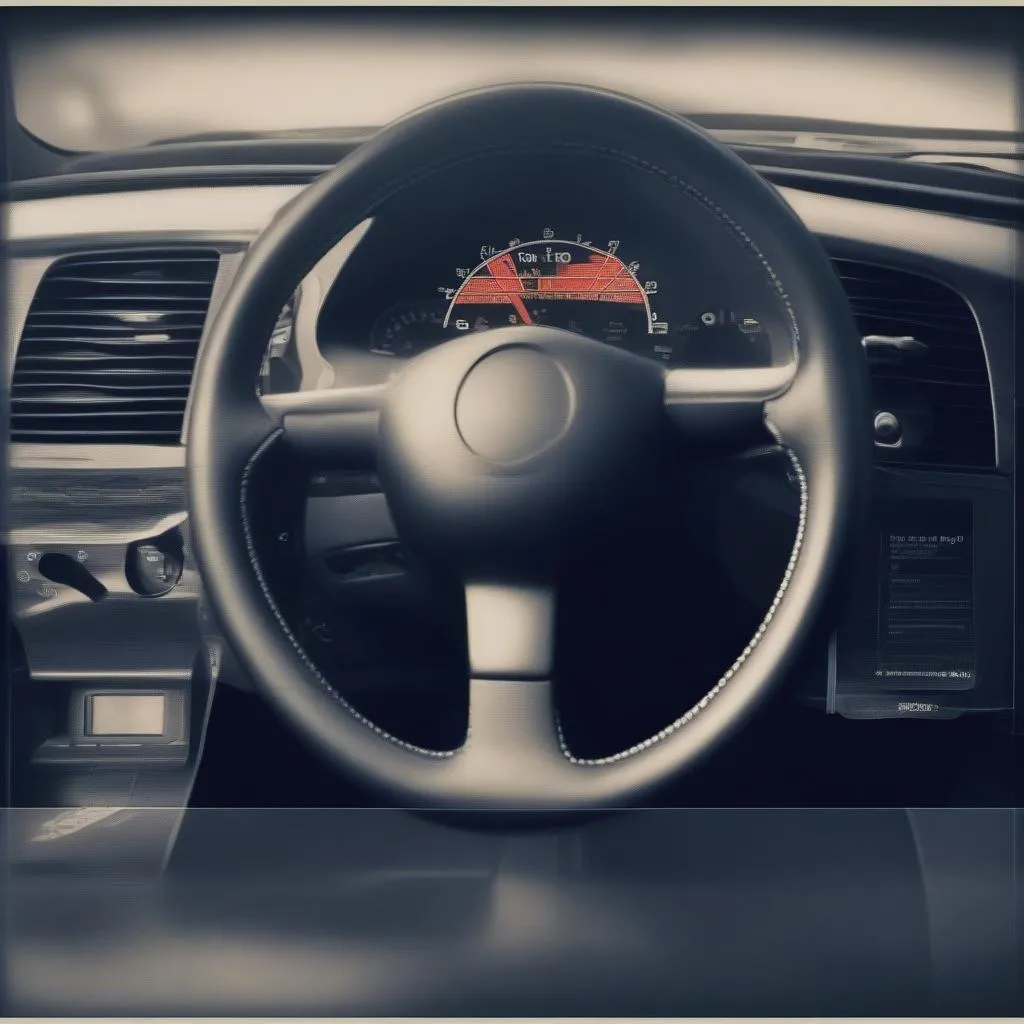Have you ever wondered how your car’s engine knows when to start, how fast to accelerate, or how much fuel to inject? It’s all thanks to the complex network of sensors and actuators controlled by an onboard computer system – a concept known as computerized diagnostics.
The Importance of Computerized Diagnostics
Computerized diagnostics, also known as automotive diagnostics, play a crucial role in ensuring your car runs smoothly and safely. The electronic control unit (ECU), the brain of your vehicle, constantly monitors various engine and vehicle parameters using sensors. Based on the data collected, it adjusts various systems like fuel injection, ignition timing, and even your car’s transmission.
Think of it like this: Imagine your car as a complex orchestra. The ECU acts as the conductor, ensuring every instrument (sensor and actuator) plays in harmony.
Understanding the “Language” of Your Car
Computerized diagnostics uses a standardized communication protocol known as the OBD-II (On-Board Diagnostics II) system. This standard, implemented in most cars after 1996, allows mechanics to connect a diagnostic scan tool to your car’s ECU and read vital information about its performance.
Imagine a doctor using a stethoscope to listen to your heartbeat. Similarly, a mechanic uses a diagnostic scan tool to “listen” to your car’s electronic symphony, identifying any potential issues.
What Problems Can Computerized Diagnostics Identify?
Computerized diagnostics can help identify a wide range of issues, including:
- Engine misfires: A misfire occurs when one or more cylinders don’t ignite properly. This can lead to reduced fuel efficiency and engine damage.
- Oxygen sensor issues: The oxygen sensor monitors the exhaust gas and provides feedback to the ECU to optimize fuel mixture. A faulty sensor can result in excessive emissions and poor fuel economy.
- Transmission problems: The ECU manages gear shifting in automatic transmissions. Issues with the transmission control system can cause rough shifting or gear slippage.
- Anti-lock braking system (ABS) malfunctions: The ABS system uses sensors to detect wheel slip and prevent locking during braking. Issues with the system can lead to reduced braking efficiency and vehicle instability.
How Computerized Diagnostics Helps Mechanics
The process of computerized diagnostics allows mechanics to:
- Identify and diagnose problems quickly and accurately: The scan tool provides specific error codes that help pinpoint the root cause of the issue.
- Save time and money: By identifying the issue faster, mechanics can avoid unnecessary repairs.
- Prevent potential issues before they become major problems: Regular diagnostics can catch minor problems before they escalate into costly repairs.
Computerized Diagnostics: A Glimpse into the Future of Automotive Repair
Computerized diagnostics technology is constantly evolving. Dealer Scanner For European Cars is a perfect example of advanced diagnostics tools specifically designed for European car models. With its powerful features and user-friendly interface, it empowers mechanics to accurately diagnose even the most complex issues.
 dealer-scanner-for-european-cars
dealer-scanner-for-european-cars
FAQs about Computerized Diagnostics
What is the difference between OBD-I and OBD-II?
OBD-I was the first generation of onboard diagnostics. While it was an important step, it provided limited information compared to the current standard, OBD-II. Read more about the differences between OBD-I and OBD-II here.
Can I use a generic scan tool on all cars?
While generic scan tools can read basic information from most cars, they might not be compatible with newer vehicles or specific models. Dealer-specific scan tools often offer more advanced features and are essential for accessing manufacturer-specific data.
How often should I get a computerized diagnostic scan?
It’s recommended to get a computerized diagnostic scan at least once a year, or if you notice any unusual driving behaviors. Regular scans can help identify potential issues before they become major problems.
Can I use a scan tool to diagnose problems myself?
While DIY scan tools are available, it’s best to leave complex diagnostics to professionals. A qualified mechanic has the expertise and experience to interpret the data and recommend the appropriate repairs.
Stay Connected for More Automotive Insights
Stay tuned for more informative articles and insights on automotive technology and diagnostics! We’ll be covering topics like scan tools for suspected infections, computerized scan tools, and the latest advancements in the automotive industry.
Need Help? We’re Here for You!
If you have any questions about computerized diagnostics or need assistance with diagnostics tools, don’t hesitate to contact us. Our team of experts is available 24/7 to provide support and guidance. Contact us on WhatsApp: +84767531508
Conclusion
Computerized diagnostics play a vital role in the modern automotive world. By providing valuable insights into your car’s performance, they enable mechanics to diagnose and resolve issues effectively, ensuring a smoother and safer driving experience. Stay informed and stay connected, and let’s keep your car purring like a well-tuned engine!
 car-dashboard-with-diagnostic-codes
car-dashboard-with-diagnostic-codes
Let us know your thoughts in the comments below. Share your experiences with computerized diagnostics and any questions you might have! We’re here to help.